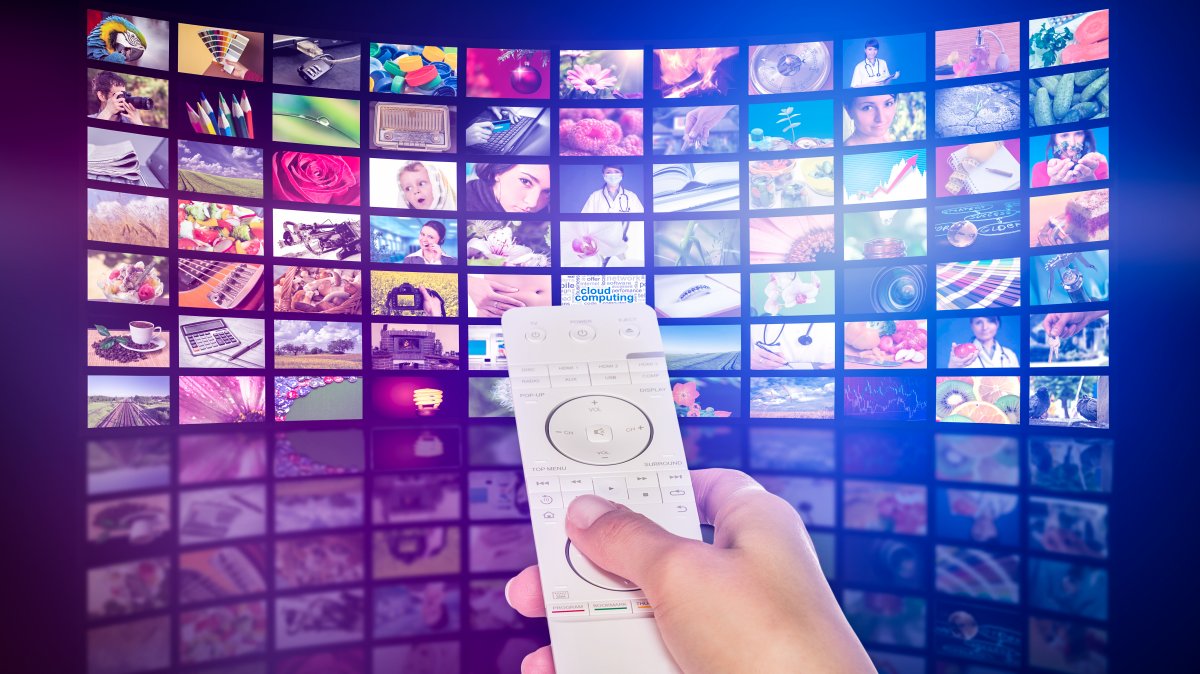In July, streaming services accounted for the largest share of TV viewership in the United States, according to analysis by audience measurement provider Nielsen. Streaming services have outperformed TV providers in viewership in the past, “but this is the first time they’ve outperformed cable providers,” Nielsen said.
maximum values
Over the past four months, streaming viewers have consistently peaked, culminating in July with 190.9 billion minutes of content streamed per week – according to Nielsen, US viewers streamed 169.9 billion during the Corona lockdown in April 2020 -minutes brought. With the exception of the last week of December last year, the weeks of July 2022 are the most streamed of all time.
With a share of 34.8 percent in July, streaming was ahead of cable usage with 34.4 percent and broadcasting with 21.6 percent – “Other” is given with 9.2 percent. According to the information, Nielsen only evaluates the playback on TV sets and not the use of smartphones, tablets or PCs.
influences
Nielsen also states that June saw the end of the NHL and NBA playoffs, the season of popular sports in the US, and sports coverage fell by 41 percent – the NFL won’t start playing again until September. Most of the rights for the sports broadcasts are currently still held by the cable providers in the USA.
However, the NBA, NHL and NFL offer their own (paid) portals for streaming. Apple secured part of the MLB broadcasting rights and offers selected games in its Apple TV+ subscription – the games can also be seen in Germany.
Evaluations should be treated with caution
In general, these evaluations should be treated with caution, as some factors are not taken into account due to the measurement methods (no mobile devices). Nielsen explains, for example, that the individual streaming providers that are consumed via cable set-top boxes are currently not evaluated in detail and fall under the heading “Other Streaming”.
“Other” accounts for the largest share of streaming providers at 10.2 percent, followed by Netflix (8 percent), YouTube (7.3 percent) and Hulu (3.6 percent). Amazon’s Prime Video ranks fifth in the US at 3 percent, ahead of Disney+ (1.8 percent) and HBO Max at 1 percent. In the US, Hulu is Disney’s service for adults.

(Image: Nielsen)
Germany’s studies disagree
According to an ARD/ZDF study from November 2021, a similar picture is emerging in Germany. Accordingly, the average usage time of media on the Internet increased to an average of 136 minutes (99 minutes in 2019). The drivers were therefore mainly streaming services such as Netflix, YouTube and the media libraries of the TV stations.
After all, 42 percent of Germans over the age of 14 regularly used streaming services – the year before it was 36 percent. According to Statista, Prime Video from Amazon leads the list in Germany with 72.3 (as of March 2022), followed by Netflix (71.9 percent) before Disney+ with 36.6 percent. The sports provider DAZN follows in fourth place (17.6 percent) ahead of Sky Go, YouTube Premium, Apple TV and Google Play.

(Image: Statista)
“The dead live longer”
A study by the Allensbach Institute for Public Opinion came up with a completely different result, which they titled “Those declared dead live longer”. According to the Allensbach study, there is no turning away from linear television. According to this, in 2022, 96 percent of those surveyed aged 14 and over will at least rarely use the classic TV offer, just like in 2010 (97 percent in 2000) – daily it is 56 percent compared to 63 percent in 2010 and 65 percent in the year 2000

(Image: Allensbacher market and advertising media analysis)
According to the Allensbach study, daily use among 14 to 29 year olds is distributed relatively evenly: linear television (27 percent), YouTube and other online video portals (29 percent) and streaming services (22 percent). With increasing age, usage shifts in favor of linear television and decreases accordingly among providers via the Internet.

(Image: Allensbacher market and advertising media analysis)
streaming chaos
In the streaming world, there is no provider that offers everything like the music services Spotify or Apple Music, to name just the two largest providers. The market is becoming increasingly confusing due to the increasing number of providers. The situation is also difficult to understand internationally: while customers in the USA can access HBO content via the in-house service HBO Max, in Germany you are dependent on WOW-TV (formerly Sky-Ticket) or Sky. Sky alone offers another online service with Sky Q.
Even your favorite program always requires some research. Marvel Universe fans have been at Netflix for a while – now they have to go to Disney+. Star Trek fans could see “Star Trek: Discovery” from CBS in the US on CBS All Access, in Germany on Netflix – but only up to season three. The fourth season started in the USA on Paramount+ because the media group ViacomCBS changed its name to Paramount. The series can currently only be bought in Germany, Paramount+ was originally supposed to start in Germany in the summer – the start is now planned for December. With Paramount+ comes the “Star Trek” series “Strange New Worlds” – “Star Trek: Picard” runs on Amazon Prime Video.
Streaming provider problems
In addition to the almost unmanageable variety of offers, the rights of the studios, the in-house productions and the constantly new providers, the streaming services are chasing customers away from each other. Switching between providers is easy and can be canceled on a monthly basis. But even the huge range of individual services does not seem to be sufficient and even the top dog is fighting against dwindling user numbers.
Netflix recently lost customers after the boom of the corona pandemic and in July the company announced a cheaper subscription with advertising for the beginning of 2023. In November 2021, Netflix got into the gaming business, but it turns out Netflix customers aren’t gamers. To combat the loss of sales, the streaming provider is testing various measures against account sharing, which is widespread and falsifies subscription numbers.
Most recently, the Disney group caught up with Netflix with its portfolio. With the individual services (Disney+, Hulu and ESPN+), the entertainment group had 221 subscribers. The new edition of “Wetten, dass…?” drew 13.8 million viewers in front of the television at the same time last year. The complexity of the providers and the overwhelmingly large range of each individual service are things that linear television outside of its own media libraries has nothing to do with, and then there are YouTube, Vimeo, Twitch …
(bme)






